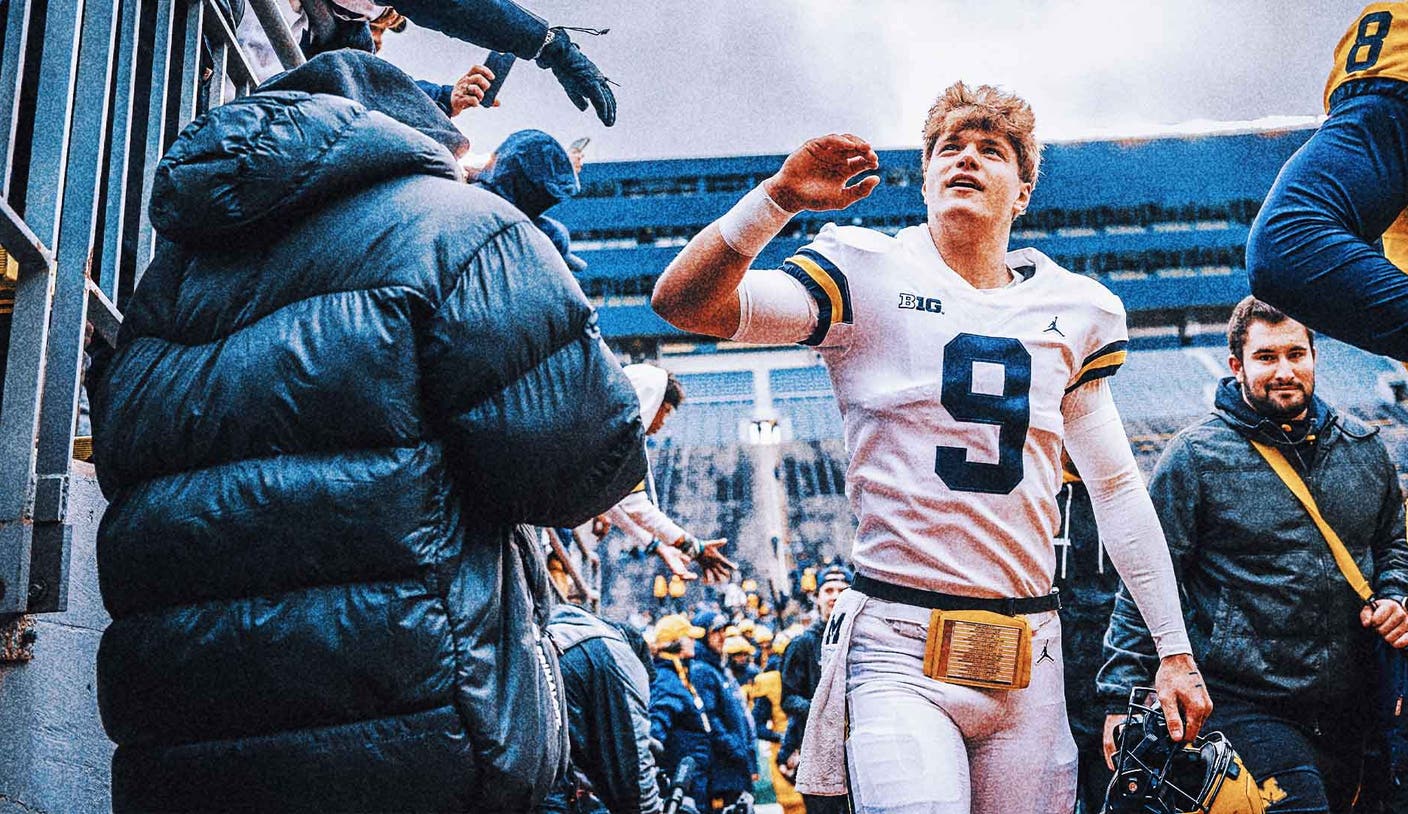
With the Big Ten set to bring in Oregon and Washington as members, the question on the football field is, does this make the conference good enough to challenge the SEC’s reign of dominance?
[Big Ten votes to add Oregon, Washington]
The SEC’s run essentially dates back to 2006 when Florida won a national title, or could even be pegged to 2004 when Auburn finished 12-0 in the regular season but didn’t get a chance to play for one.
The shortest answer to this question? Maybe.
A longer answer means acknowledging that while Oregon and Washington are the last two Pac-12 programs to play in the College Football Playoff and both have won league titles in the CFP era, neither has been able to defeat the two best teams in the SEC — Alabama and Georgia.
Thirteen of the last 17 national champs hail from the SEC, with the others being Clemson (twice), Florida State and Ohio State.
Neither Oregon nor Washington were able to beat Alabama (UW) or Georgia (Oregon) the last time each faced them. Oregon did beat Ohio State in the regular season in 2021, but lost the one that mattered — the 2014 national title game.
Ohio State has been beaten by Georgia and Alabama in each of its last two CFP appearances. Michigan was beaten by Georgia in its first CFP appearance in 2021 and lost to Texas Christian in 2022.
The bottom line? The addition of Oregon and Washington gives the conference two more teams capable of picking up a CFP spot in a 12-team format, and that means more Big Ten teams in meaningful games. But the Ducks and Huskies are about as likely to compete for Big Ten titles as Penn State, and remember that the Nittany Lions won the Rose Bowl last season, yet finished third in their own division.
Ohio State and Michigan remain the Big Ten standard in the CFP era.
How did we get here?
Two years ago, many believed the Big 12 to be closer to dissolution than the Pac-12, after it was announced that Oklahoma and Texas were headed to the SEC and prized coach Lincoln Riley had departed Oklahoma for USC. But like my Sooners against Baylor in the Year of Our Lord 2019, the Big 12 came back from a 25-3 deficit to snatch victory from the jaws of defeat, adding UCF, BYU, Cincinnati and Houston.
They also hired Brett Yormark as commissioner, and he beat the Pac-12 to the punch on a new TV rights deal a year ago.
It was about that same time that the Big Ten took the entire Los Angeles TV market — perhaps the Pac-12’s best asset — in UCLA and USC.
Another key domino fell two weeks ago, when the Big 12 added Colorado and the marketing machine that is Coach Prime.
Following the Buffs’ departure, Pac-12 commissioner George Kliavkoff was reportedly supposed to reveal a potential TV deal to his members. What he brought was a streaming option with the incentive that the schools would make more money if they leveraged it by adding subscribers — almost like a pyramid scheme. Schools, though, have always preferred the guarantee that comes with a traditional TV deal.
That caused more dominoes to fall. The Pac-12’s two most prized universities left in the Pac-12 — Oregon and Washington, who are not just natural rivals but well-heeled and the league’s most recent participants in the College Football Playoff — are off to the Big Ten.
Arizona, which had reportedly shown interest in leaving the Pac-12 far sooner than Colorado did, applied for admission to the Big 12 — and was admitted — on Thursday. On Friday, it was reported that Utah and Arizona State are also bound for the Big 12.
Assuming all of these moves go through, only Cal, Stanford, Washington State and Oregon State are left in the Pac-12.
All of these moves are made for business reasons, not football ones. In a sport where coaches come and go annually and players now do the same, the contracts that bind and fortify the sport are those between conferences and TV networks.
Universities have built not just their athletic budgets but their marketing and reputation, in large part, around football. Watching a university’s team compete on TV is the best branding and marketing opportunity we have in academia, and there is a direct correlation between university admission SAT scores and the quality of its football program.
But it’s also about not losing money at a moment when the industry is feeling the crunch and live sports is the last refuge of profit.
Big Ten schools are expected to make more than twice as much ($70 million) as Big 12 schools ($31.7 million) when the Big Ten’s new TV deal begins in 2025 — one year after the CFP expands to 12 teams. There’s also the need for another partner to help pick up the tab for adding UO and UW.
If that happened, there’s reason to believe that Stanford and Cal — academically excellent and athletically relevant — might also seek membership in the Big Ten, which prides itself on its members being a part of the American Association of Universities.
That would leave just Washington State and Oregon State in what was once one of the five most powerful conferences in the sport.
What happens to the Pac-12?
Any TV deal the Pac-12 signs now will be short-term, with the hope of holding on until it can find suitable members to form a healthy league that networks will want.
San Diego State, Boise State, SMU and others would have to secure an invitation but only after being granted an exit without owing money to their current league partners.
It is likely that these are the last days of the Pac-12, and certainly, the last days of the Pac-12 as we had come to know it since its core formed in 1968 as the Pac-8.
To be the “Conference of Champions,” you first need to ensure the future of your conference.
RJ Young is a national college football writer and analyst for FOX Sports and the host of the podcast “The Number One College Football Show.” Follow him on Twitter at @RJ_Young and subscribe to “The RJ Young Show” on YouTube.
COLLEGE FOOTBALL trending

Get more from College Football Follow your favorites to get information about games, news and more








